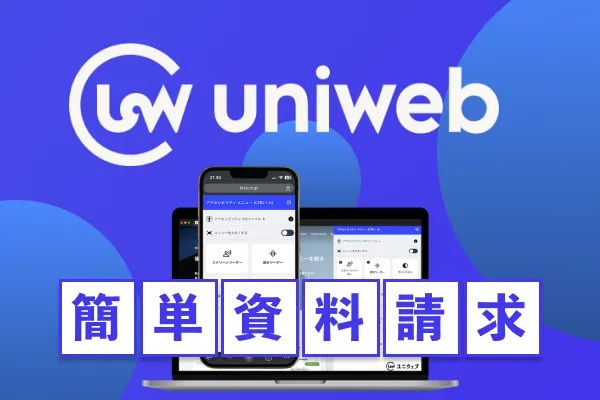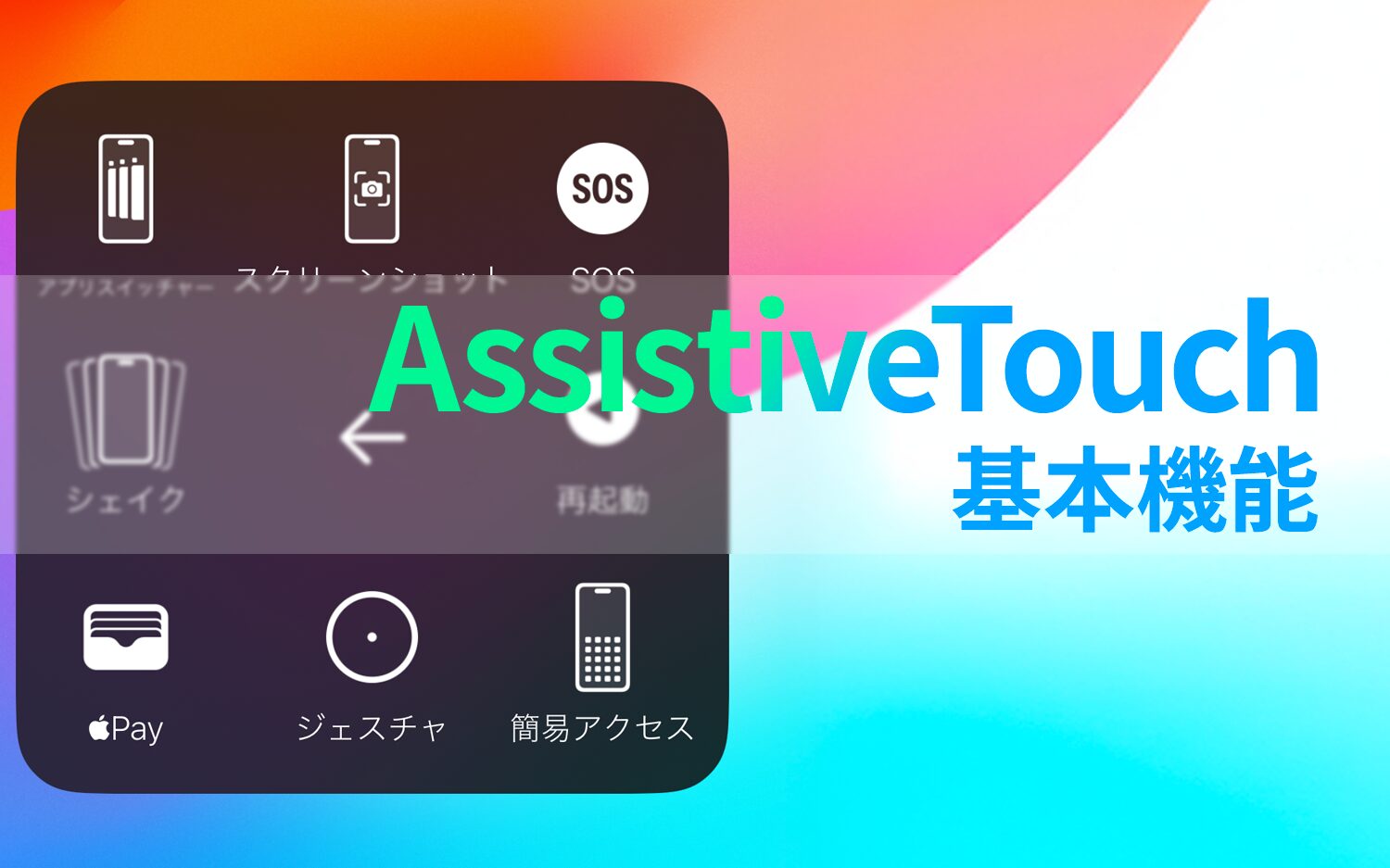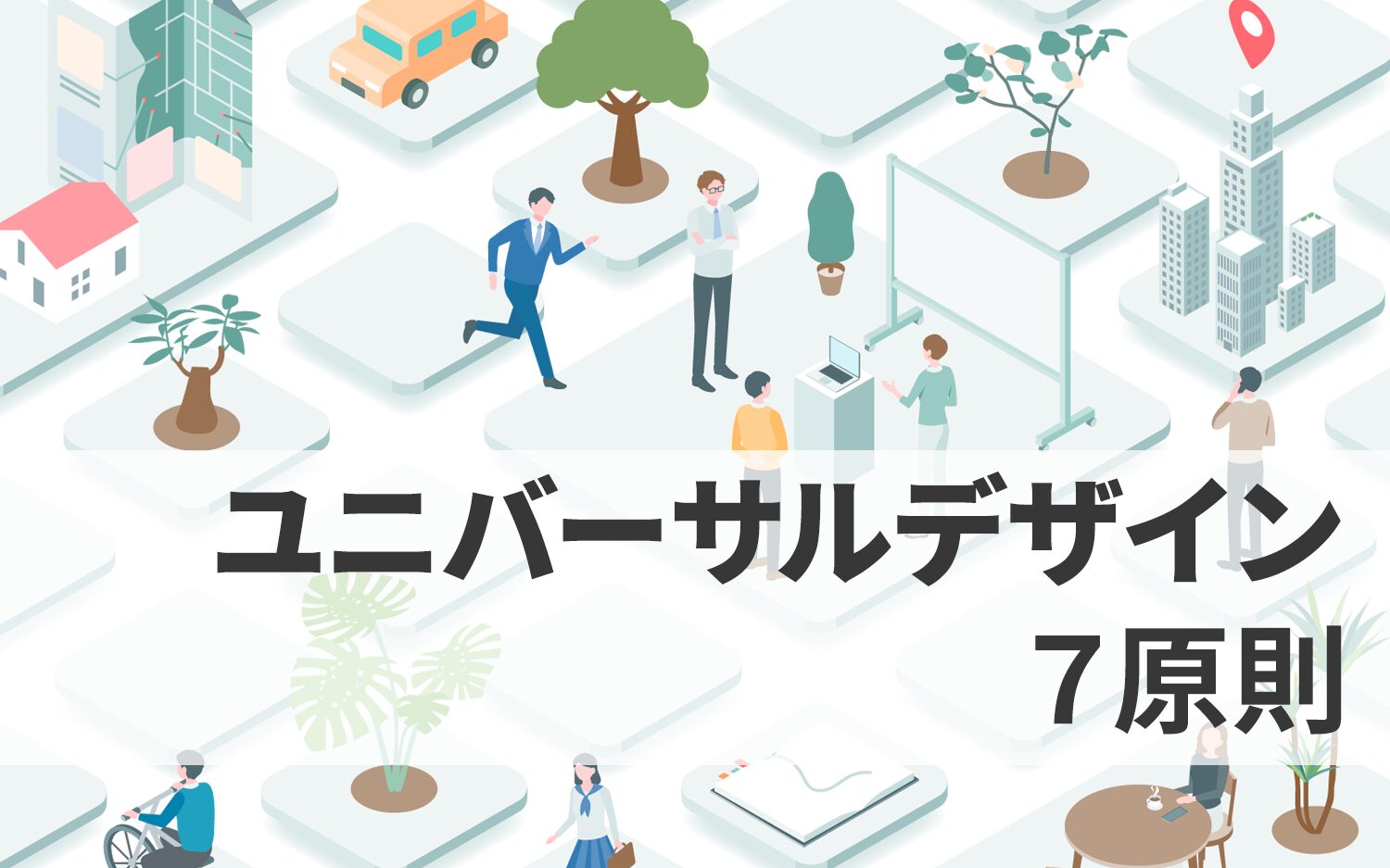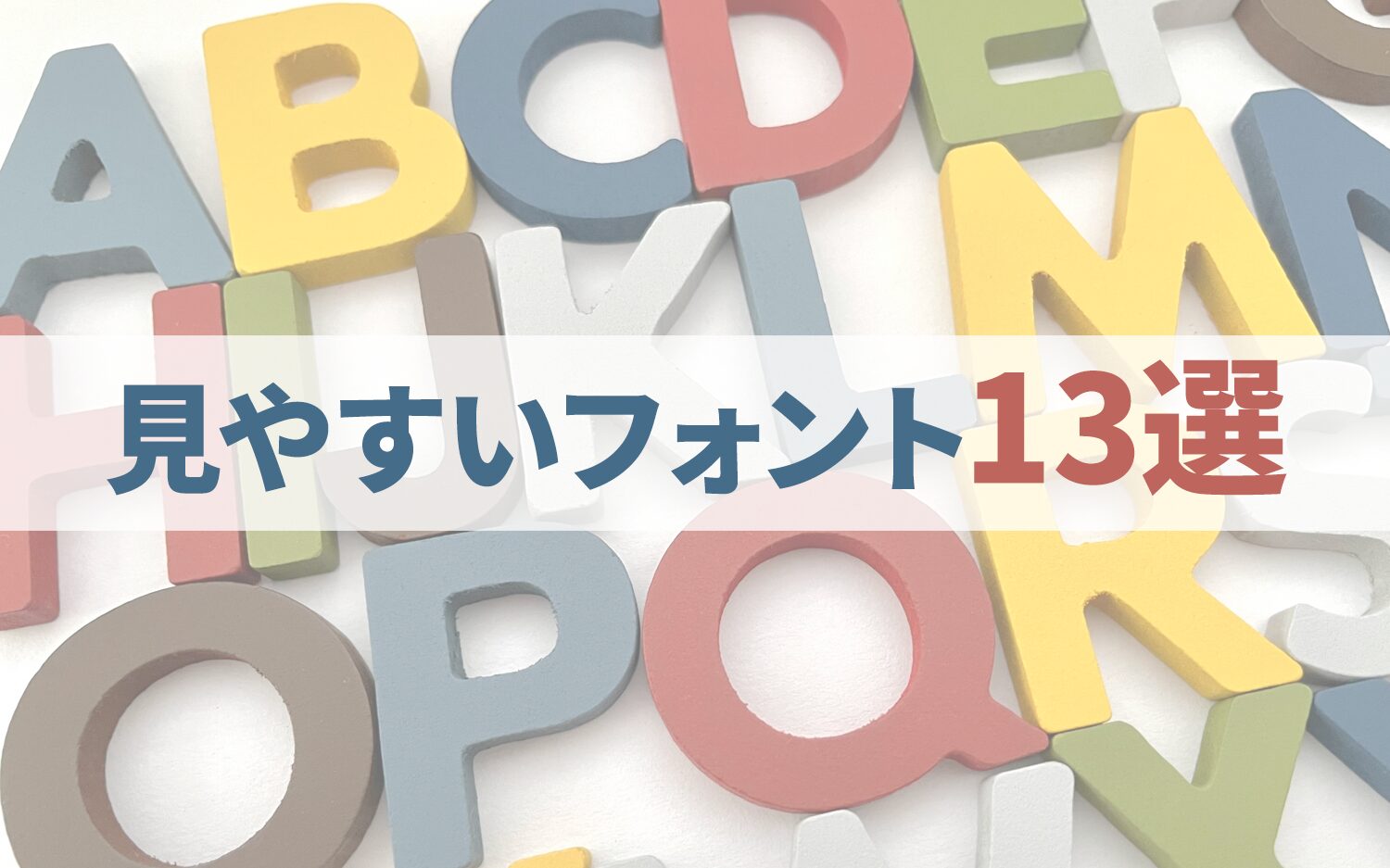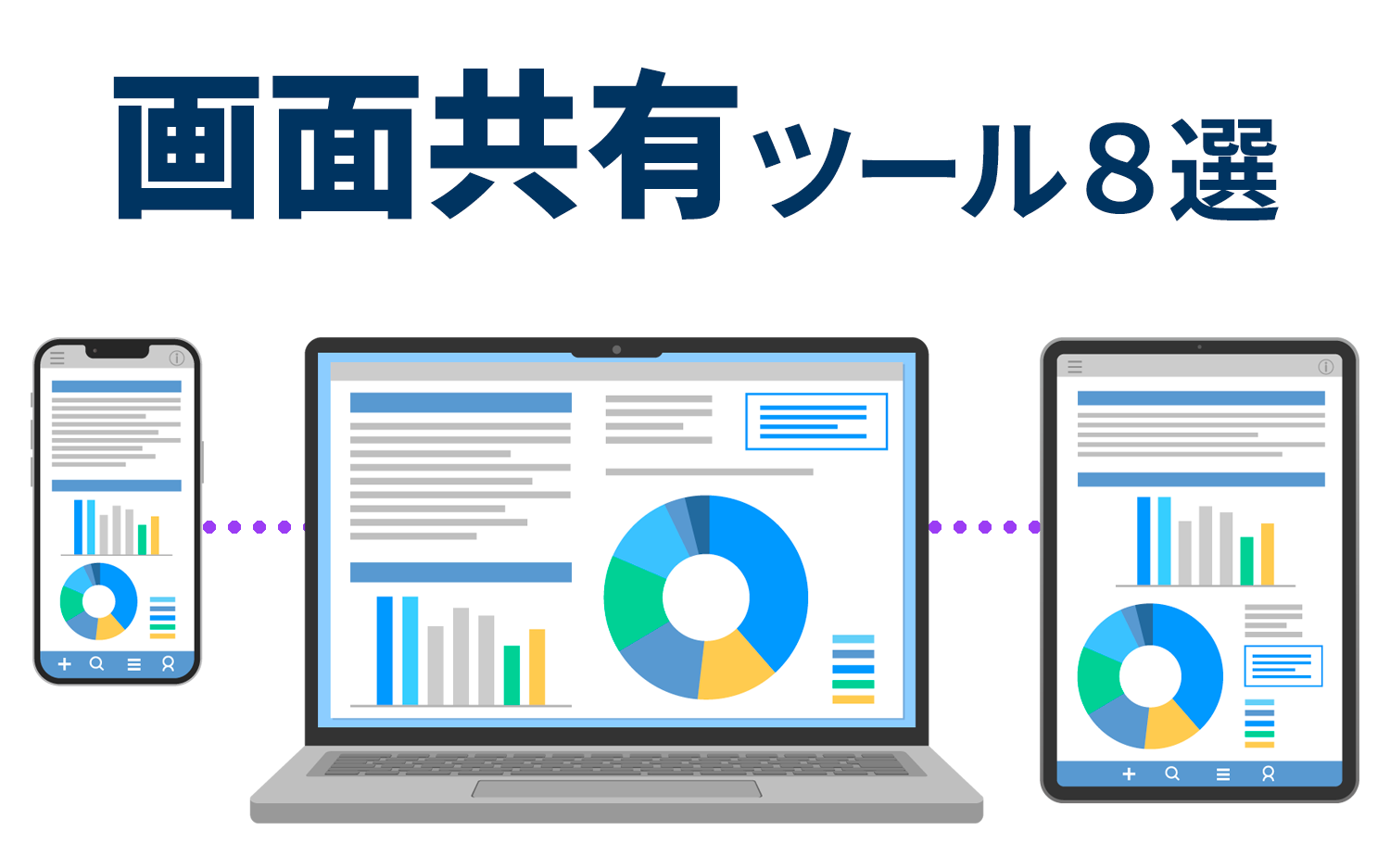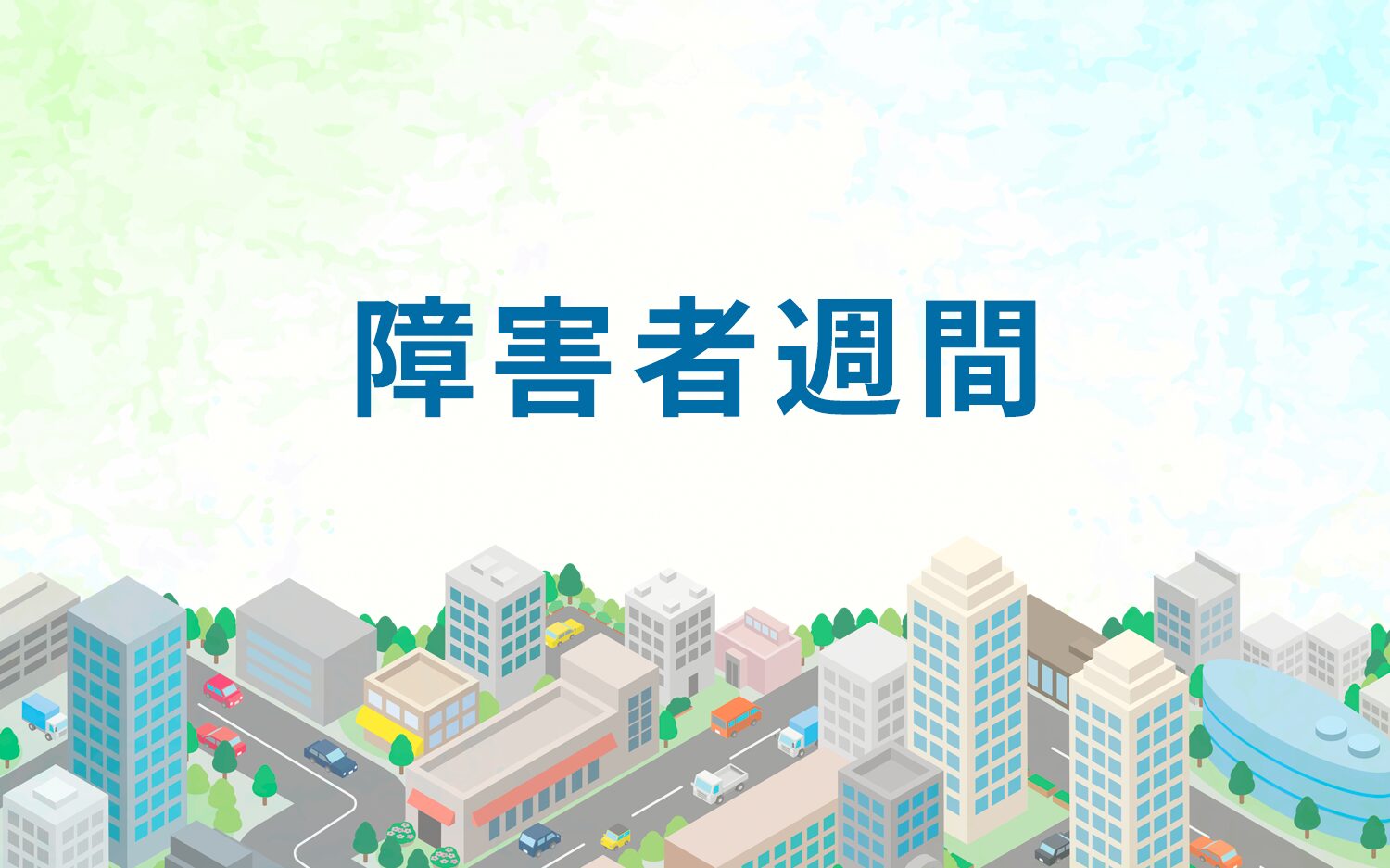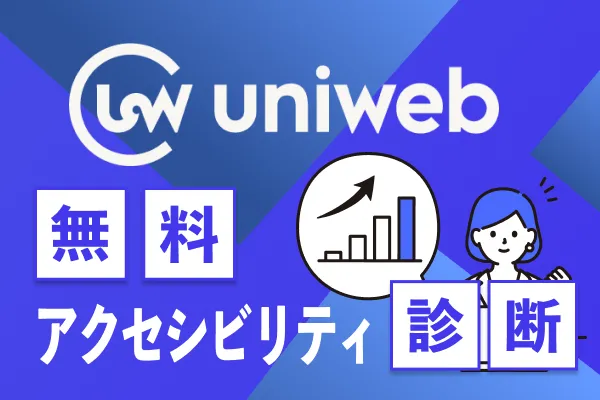The purpose of barrier-free is to eliminate the four types of barriers.
2025/03/26
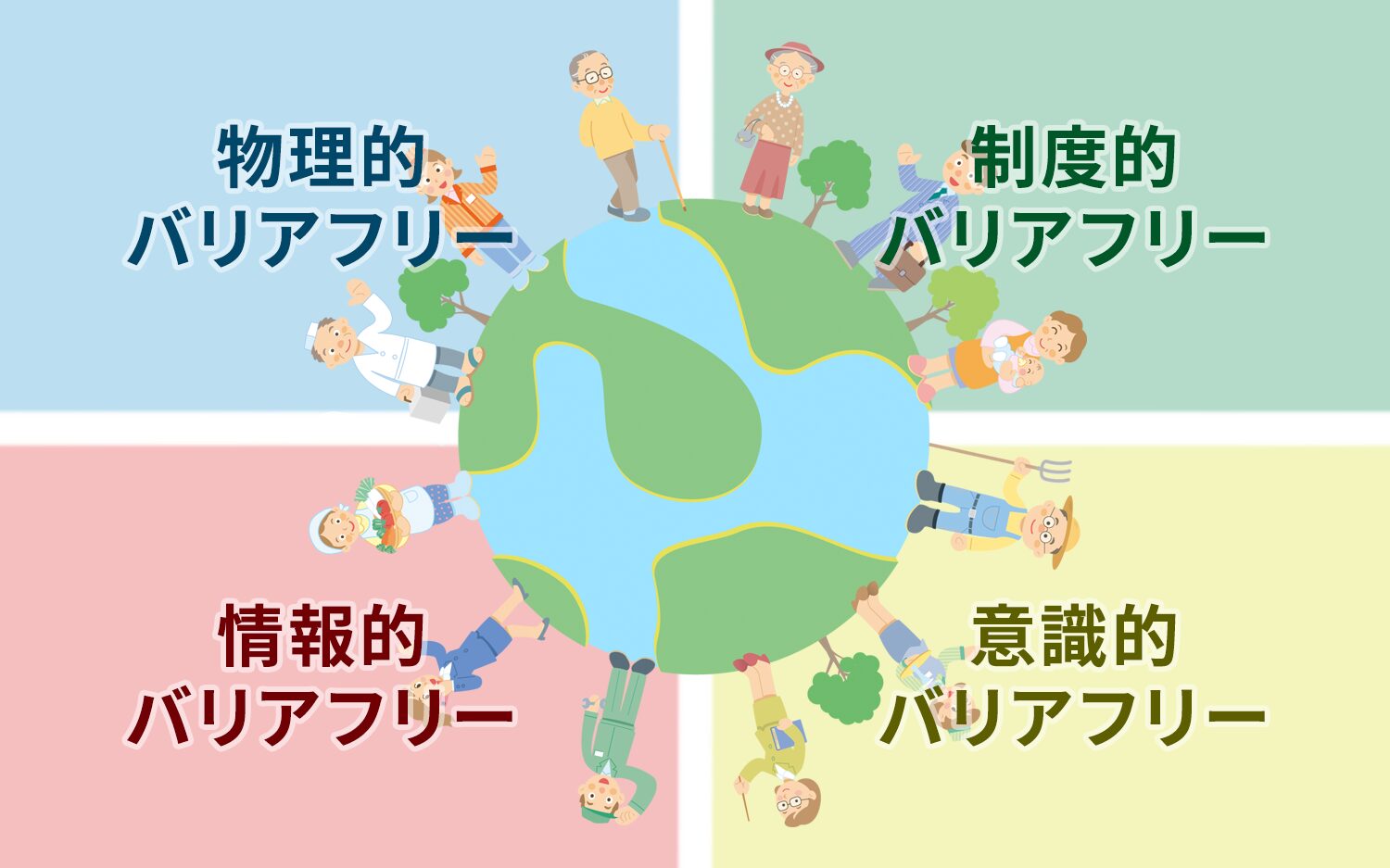
Barrier-FreeThe "barrier-free society" is an initiative to enable all people, including people with disabilities and the elderly, to live comfortably and participate in society.
These barriers fall into four types
(2) Institutional barriersBarriers due to inadequate laws and institutions
(iii) Informational barriersBarriers to information acquisition and communication
(4) Consciousness barrierBarriers due to lack of social understanding
By promoting barrier-free (elimination of barriers) for each of these four types of barriers, we can create an environment in which all people, regardless of disability, can act freely, obtain information, and be active members of society.
Barrier-free is not just for certain people; it is an essential concept for creating a society that is easy for everyone to live in.
This article details the four types of barrier-free initiatives and introduces the characteristics and significance of each, as well as specific initiatives. please refer to this article to understand the essence of barrier-free and to help realize a better society.
Table of Contents
- 1 The purpose of barrier-free is to eliminate four types of barriers: physical, institutional, informational, and awareness.
- 2 (1) "Physical Barrier-Free" for freedom of movement
- 3 (2) "Institutional Barrier-Free" supported by laws and systems
- 4 (iii) "Informational barrier-free" to eliminate information gaps
- 5 (iv) "Conscious Barrier-Free" to change social consciousness
- 6 UniWeb" is a tool to realize informational barrier-free websites
- 7 To better understand the four types of barriers
- 8 Conclusion
The purpose of barrier-free is to eliminate four types of barriers: physical, institutional, informational, and awareness.
Barrier-free" refers to the removal of specific barriers (barriers) in society to create a comfortable living environment for everyone, including people with disabilities and the elderly.
However, there are many different types of barriers that need to be eliminated, and these areFour major categoriesThe following is a summary of the results of the project.
(2) Institutional barriers(Barriers due to inadequate laws and institutions)
(iii) Informational barriers(Barriers to information acquisition and communication)
(4) Consciousness barrier(Barriers due to lack of social understanding)
The goal of barrier-free living is to eliminate these barriers and create an environment where everyone can live on an equal footing.The following table summarizes the characteristics of each of these barriers and efforts to eliminate them.
◆Four types of barriers and barrier-free efforts to eliminate them
| Barrier Type | Description of barriers | Main target audience to be affected | Barrier-free initiatives to eliminate | Major Related Laws, Regulations and Guidelines |
| Physical Barrier | Difficulty in movement or use due to the structure of the building or transportation system | Wheelchair users, elderly, visually impaired, etc. | (1) Physical Barrier-Free (ramps, elevators, non-step buses, Braille blocks, etc.) |
・Barrier-Free Access Act ・the Building Standards Act |
| institutional barrier | Lack of laws and systems in place and difficulty in receiving social support | People with disabilities, elderly, caregivers, job seekers, etc. | (2) Institutional Barrier-Free (e.g., barrier-free laws, systems to promote employment of persons with disabilities, and mandatory provision of reasonable accommodation) |
・Act on the Elimination of Discrimination against Persons with Disabilities ・Disability Employment Promotion Act |
| informational barrier | Difficulty in obtaining information due to visual, hearing, or other disabilities | Visually impaired, hearing impaired, elderly, etc. | (iii) Informational barrier-free (voice guidance, sign language interpretation, subtitled broadcasts, web accessibility) |
・Act on the Elimination of Discrimination against Persons with Disabilities ・JIS X 8341 (Web accessibility) |
| conscious barrier | Lack of understanding or prejudice in society causes restrictions in life and activities | People with disabilities, LGBTQ+, foreign nationals, elderly, mentally ill, etc. | (4) Conscious barrier-free (Diversity education, promotion of a symbiotic society, and universal design) |
・Universal Design Promotion Measures ・SDG Goal 10: "End inequality among people and nations." |
Barrier-free is usually viewed only in terms of physical aspects, such as making buildings and transportation easier to use, but as this table shows, it actually encompasses a variety of areas, including law, information, and social awareness.
This article describes barrier-free initiatives for each of the four types of barriers (barriers).(1) physical barrier-free, (2) institutional barrier-free, (3) information barrier-free, and (4) awareness barrier-free.and will be classified and explained in detail.
(1) "Physical Barrier-Free" for freedom of movement
What is physical barrier-free?Barriers to movement of buildings and transportationThis is an initiative to create a safe and comfortable environment for everyone by removing the
This is not just about eliminating steps, but also about introducing elevators and non-step buses,Design incorporating universal design conceptsare required.
The freedom of movement will benefit not only the elderly and the disabled, but also people with baby strollers and those with large luggage, leading to greater urban convenience and economic revitalization.
In recent years, physical barrier-free efforts have been progressing in Japan, and the number of barrier-free stations and public facilities has been increasing throughout the country.
◆Barrier-free stations and public transportation
Improvement of elevator installation rate at major stations (Ministry of Land, Infrastructure, Transport and Tourism)
Promote introduction of nonstep buses in urban areas
◆Barrier-free public and commercial facilities
Introduction of tactile information boards and voice guidance
Expansion of services for the hearing impaired at movie theaters and museums
According to the Ministry of Land, Infrastructure, Transport and Tourism, as of the end of FY2022, of the railroad stations used by more than 3,000 passengers per day nationwide,Mobility-enhancing facilities such as elevators and ramps are installed in approximately 96% of the buildings.In addition, the railroad stationThe platform door installation rate has reached about 50%.The barrier-free accessibility is steadily progressing.
However, many facilities in rural areas are not yet barrier-free, and budgets are a challenge, especially in depopulated areas.
Even when physical barriers are removed, "information barriers" remain, such as the lack of appropriate information displays and difficulty in understanding how to use them. Problems such as the lack of audio guidance for the visually impaired and the difficulty in locating barrier-free restrooms have been pointed out.
Next, we will take a closer look at "institutional barriers," which support barrier-free access in terms of laws and systems.
(2) "Institutional Barrier-Free" supported by laws and systems
What is institutional barrier-free?laws and social institutions, and to developThe program is an effort to create an environment in which all people, including the disabled and the elderly, can live and participate in society in a fair manner.
By legal arrangement,Companies and government agencies are obliged to take actions that meet certain standards, andIn addition, the entire society is becoming increasingly aware of the need for barrier-free accessibility,It also plays a role in encouraging the social participation of people with disabilities through financial support and employment promotion programs.。
In recent years, institutional barrier-free systems have been promoted in Japan, and various laws and systems have been established as follows.
◆Major laws promoting barrier-free access
It establishes barrier-free standards for public facilities and transportation, and serves as a guideline for construction and renovation.
・Act on the Elimination of Discrimination against Persons with Disabilities
Mandates reasonable accommodation for persons with disabilities and prohibits unfair discrimination on the basis of disability.
・Disability Employment Promotion Act
Companies above a certain size are obligated to employ persons with disabilities, and a payment system is applied if the employment rate is not achieved.
◆Social systems to support the disabled and elderly
Require companies and government agencies to respond appropriately to the needs of people with disabilities.
Employment support systems (Hello Work, employment support centers for people with disabilities, etc.)
Public support to expand employment opportunities for people with disabilities.
Support for use of public facilities and transportation (welfare cab tickets, transportation assistance programs, etc.)
Assistance programs for people with mobility difficulties.
As of FY2023, according to the Japanese government,Actual employment rate of persons with disabilities in the private sector is 2.33This is slightly higher than the legally mandated employment rate (2.3%),Percentage of companies achieving the legally mandated employment rate is 50.1The number of people with disabilities employed by companies reached 642,178, an increase of 4.6% over the previous year and a record high for the 20th consecutive year.
However, even with the system in place, 53,963 companies have not yet achieved the legally mandated employment rate, many of which are small and medium-sized enterprises (SMEs), among others,There are 31,643 companies that do not employ a single person with disabilities, accounting for approximately 58.6% of the total number of companies that have not yet achieved this goal.In order to achieve the legally mandated employment rate, the future challenge is to promote employment in small and medium-sized enterprises.
Reference: 2023 Employment Status of Persons with Disabilities (Ministry of Health, Labour and Welfare)
Next, we will take a closer look at "informational barriers" that support access to information.
(iii) "Informational barrier-free" to eliminate information gaps
Informational barrier-free means with or without disabilities,It is an effort to create an environment in which all people have equal access to information.Technology and systems must be developed so that a diverse range of people can access information, including the visually and hearing impaired, the elderly, and foreign residents.
As well as technical assistance such as speech-to-speech capabilities, subtitled broadcasts, and sign language interpretation services,In the design of websites and digital contentIt is important to create an environment that is accessible to all.
As shown below, informational barrier-free efforts are progressing in Japan, and public institutions and companies are increasingly taking action.
◆Improve web accessibility
Strengthening accessibility standards on government and municipal websites
Provide web accessibility tools and other services by public agencies and companies
◆Barrier-free media and broadcasting
Introduction of barrier-free subtitles and audio guidance in movies and video distribution services
◆Providing information using digital technology
Providing support services for the visually impaired and hearing impaired through smartphone applications
According to data released by the Ministry of Internal Affairs and Communications in 2022, the five key stations in Tokyo and four in OsakaThe subtitling rate is 100.0%, 99.9% for the 4 local stations, and 87.4% for the 101 prefectural local stations (excluding independent stations).It is reported that
On the other hand,Sign language broadcasts per week averaged 18 minutes for the five Tokyo key stations, 13 minutes for the four Osaka stations, 24 minutes for the four Nagoya stations, and 21 minutes for the prefectural local stations.and airtime remains limited.
Next, we will take a closer look at "conscious barrier-free," which encourages a change in social consciousness.
(iv) "Conscious Barrier-Free" to change social consciousness
Conscious Barrier-Free is an initiative to eliminate prejudice and misunderstanding toward people with disabilities and the elderly, and to realize a society in which everyone can live together (a symbiotic society).Even if physical and institutional barrier-free systems are advanced, they cannot be truly barrier-free without the understanding of society as a whole.。
In the Conscious Barrier-Free initiative,Awareness-raising activities through school education, corporate training, and mediaand others play an important role.
In Japan, the following efforts to promote conscious barrier-free access are gaining momentum.
◆Promoting understanding of disabilities in school education
Promote experiential learning that brings people with disabilities into contact with each other.
◆Enlightenment activities in business and government
Introducing Diversity and Inclusion Training for Companies
◆ Raise awareness through media and cultural activities
Increase in media coverage of the success of athletes with disabilities (e.g., Paralympics)
According to a poll conducted by the Cabinet Office in 2022,Only 48.5% of the respondents answered that they "know" the concept of a "symbiotic society," while 19.3% answered that they "don't know.While 64.8% of respondents believe that it is normal for people with disabilities to live a normal life around them, 4.1% of respondents do not think it is normal.
Furthermore,61.9% of the respondents said they have "helped" people with disabilities when they were in need, while 36.7% said they have never helped them, andThe need is for a change in awareness that will lead to actual action.
Reference: Summary of "Public Opinion Survey on Persons with Disabilities" (Cabinet Office)
In order to further promote conscious barrier-free in the future,Enhancement of experiential learning in educational settings and mandatory diversity training in companiesThe ultimate goal of barrier-free accessibility is to deepen society's understanding of people with disabilities as a whole.
UniWeb" is a tool to realize informational barrier-free websites
As one of the concrete measures to realize informational barrier-free websites, we have mentioned "the spread of website design based on JIS X 8341-3".Web Accessibility Tool 'UniWeb'is a plug-in tool that makes this easy and helps improve web accessibility on all websites.
'UniWeb' isJust add a line of code to your websiteand you will be able to take advantage of a wide variety of accessibility features on your site from the day of installation.
◆UniWeb's main features
Automatically diagnose the accessibility status of your website and identify problems.
・Symptom profile function
Provides optimal display settings according to the user's symptoms, such as color vision characteristics and visual impairment.
・Extensive customization functions
The color and size of the buttons can be flexibly customized to match the website design.
・multilingual function
AI Translation automatically translates Japanese text on the site in real time in more than 60 languages.
UniWeb has been implemented by many companies and organizations to improve web accessibility.The "pink humanoid icon" in the lower right-hand corner of this articleto experience UniWeb's wide variety of accessibility features.
With the introduction of UniWeb, we can contribute to the promotion of informational barrier-free websites by making them easy to use for everyone.
To better understand the four types of barriers
Barrier-free requires support not only in the physical environment, but also in systems, information, and awareness. this article describes four types of barrier-free, but for those who wish to learn more, here are some related articles.
Physical Barrier-Free: Examples of Barrier-Free in Everyday Life
Physical barriers are,Building and transportation facilitiesThese are things that we can see and maintain, such as ramps, elevators, and universally designed restrooms.
These specific examples are detailed in the following articles.
◆Related Articles
The difference between barrier-free and universal design is the 'design concept.'"
Institutional Barrier-Free: Mechanisms supported by laws and rules
To achieve barrier-free access, it is essential to have laws and systems in place, especiallyBarrier-Free Act."is an important law to promote barrier-free access to public facilities and transportation.
For more information on the specifics of the Barrier-Free Act, please see the following articles.
◆Related Articles
Informational Barrier-Free: Information for All
Informational barrier-free is an effort to ensure smooth access to information for people with visual and hearing impairments.Subtitling, audio guidance, and web accessibilityThese include
This article also introduces web accessibility support tools such as "UniWeb". For a deeper understanding of the concept of information barrier-free, please refer to the following articles.
◆Related Articles
It explains how to use screen readers and the five most common tools."
Five easy-to-use "contrast checkers" for those "in charge."
It explains five ways to achieve "read-aloud" on a Web site."
Conscious Barrier-Free: Understanding Society as a Whole
In order to realize barrier-free access, it is essential not only to improve physical facilities and systems, but also to "change society's mindset." To this end, it is important to create a social framework that allows diverse people to play an active role through school education and corporate training.
Especially in recent years,"inclusive" and "diversity."and the importance of creating a system in which all people can participate in society on an equal footing has been reaffirmed.
To learn more about these ideas, please refer to the following articles.
◆Related Articles
A Complete Guide to Diversity that Managers and HR Professionals Need to Know."
Conclusion
There are four main types of barrier-free access: physical, institutional, informational, and awareness.These do not function in isolation, but complement each other and play a role in creating a society in which all people can live comfortably.
Even if physical barriers are advanced, they will not be fully utilized if institutions are not in place; even if access to information is guaranteed, the original purpose of barrier-free access will not be achieved if social awareness does not catch up; in this way,Promoting barrier-free access requires a multifaceted perspective.
Barrier-free is not for certain people, but a concept to create a society that is easy to live in for all. becoming more aware of barrier-free in our daily lives, and getting more people interested in its promotion, are important actions to enrich our society.
-
Contact Us
-
Request Info
-
Free Trial
-
Partner System

